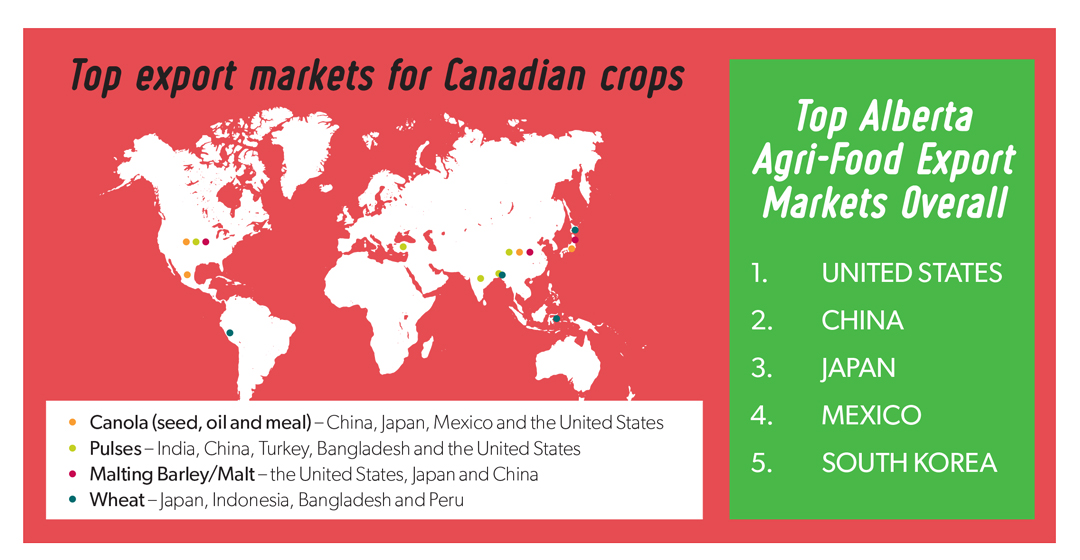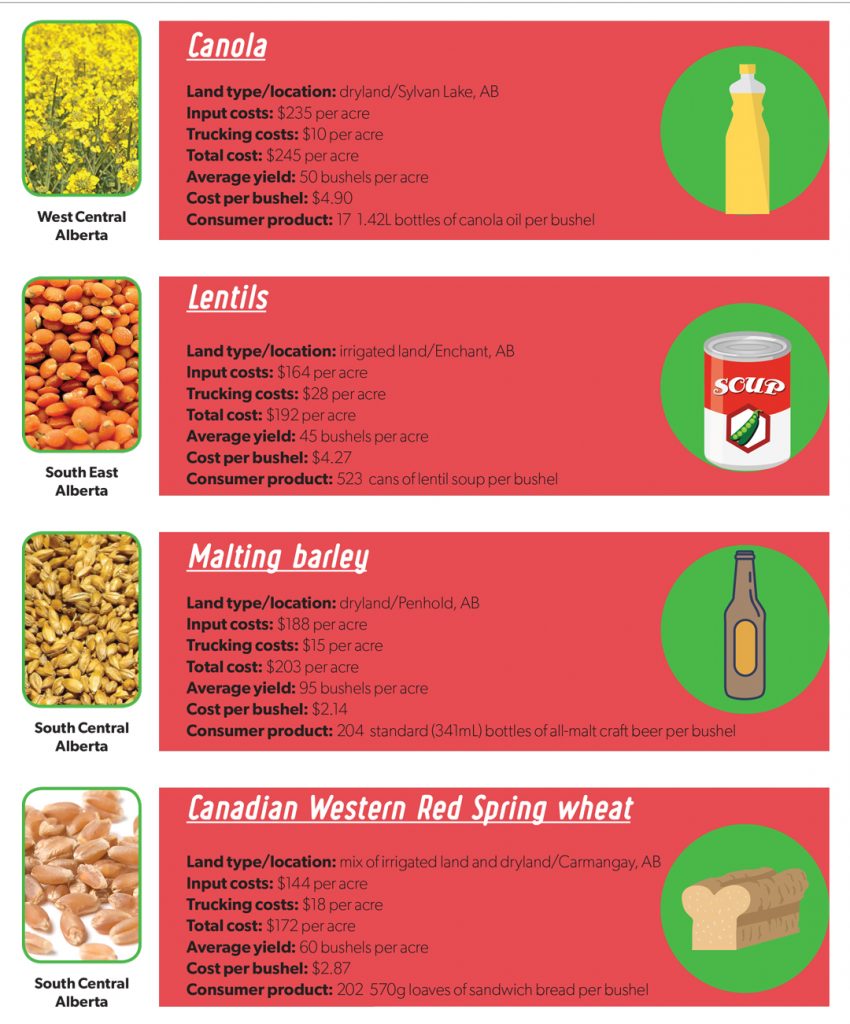NUMBERS GAME
BREAKING DOWN THE COSTS BEHIND WESTERN CANADA’S TOP CROPS
BY TYLER DIFLEY
During the spring, summer and fall, western Canadian farmers are hard at work, planting, tending and, eventually, harvesting a number of important crops. Here on the Prairies, if you drive through enough rural areas and long stretches of highway, you’ll likely see one or more of the following crops in nearby fields: wheat, barley, canola and pulses (a term that encompasses a number of dried legumes, including peas, beans, lentils and chickpeas).
To grow these crops, farmers must play a complicated numbers game. Each year, they must navigate razor-thin margins to find out how they can produce the most crops with the least amount of input costs—costs that you may not have ever considered when using a loaf of bread to make a sandwich or cracking open a cold beer after a long workday.
To simplify this equation somewhat, it is helpful to break things down on a smaller scale, so let’s look at things from the perspective of a single bushel, a measurement of volume that is common in agriculture. If you’re having a hard time visualizing it, a bushel of grain, canola or pulses is equal to about 10 gallons, or roughly 35 litres—enough to fill a standard laundry basket. So, how much does it cost to produce a bushel of wheat, barley, canola or lentils? And how does a bushel of each of those crops translate to a product you can find at your local supermarket or liquor store?
The input costs listed on these pages include seed and seed treatment, fertilizer, and fuel for machinery, as well as fungicide, insecticide and herbicide application. Trucking costs are accrued while moving grain from the farm to an Breaking down the costs behind Western Canada’s top crops elevator for sale. Keep in mind that the input costs included here are not comprehensive, and that farmers must also account for the cost of their land, crop insurance, labour, storage, machinery and machinery repair, among others factors, when determining their total costs on an annual basis.
Also, remember that when you buy a loaf of bread, a bottle of canola oil, a can of soup or a case of beer, your money does not go directly to farmers. While the prices of these products reflect work done at all levels of the value chain, the farm is only one step in the process and each step requires a separate transaction. As a result, farmers only receive the price of the raw commodity, which is much lower than the price of the finished product. This is why it is so important for farmers to get the best price for their crop at market.








Comments